We stayed two nights in Braşov, so we spent a day of touring the outskirts of the city. In the morning of this day, we visited Bran Castle, famous as Dracula’s Castle. Sightseeing at Bran is summarised in a separate post.
In the afternoon of the same day, we went to Hărman village to visit its fortified church. This post focuses on the sights and access to Hărman Fortified Church.
About Hărman Fortified Church
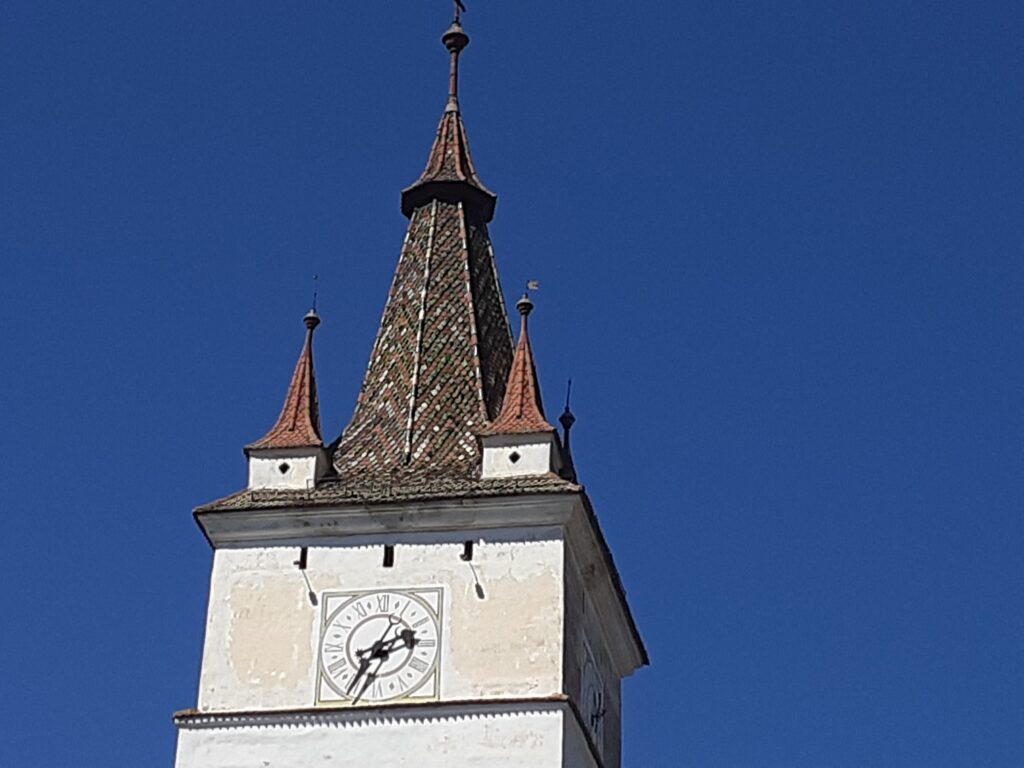
The history of Hărman Fortified Church can be traced back to the 13th century, but it was not built as a fortress until the 15th century. The church building itself is thought to have been constructed as early as 1240, and the Romanesque cathedral has partially survived to the present day.
Due to the threat of the Ottoman Empire, an additional double concentric fortification wall and a 3-4 m deep ditch surrounding it were built in the 15th century. No moat remains today. The outer wall seen today is 4.5 m high, while the inner wall was 12 m high. However, as the northern part of the fortress was a marshy area, the walls were lower in height. The inner wall had seven towers over 20 m high, connected to each other. This inner wall and some of the towers are well preserved and visitors can climb the towers and walk around the walls for sightseeing.
Several rooms were built adjacent to the inner wall, and the whole church area was large enough to shelter up to 800 inhabitants. The church has a 56 m tower, a 19th-century organ and a preserved Baroque altar, which are highlights of the tour. The church is one of the few churches in Transylvania that preserves fresco paintings from before the religious revolution.
Getting to Hărman Fortified Church
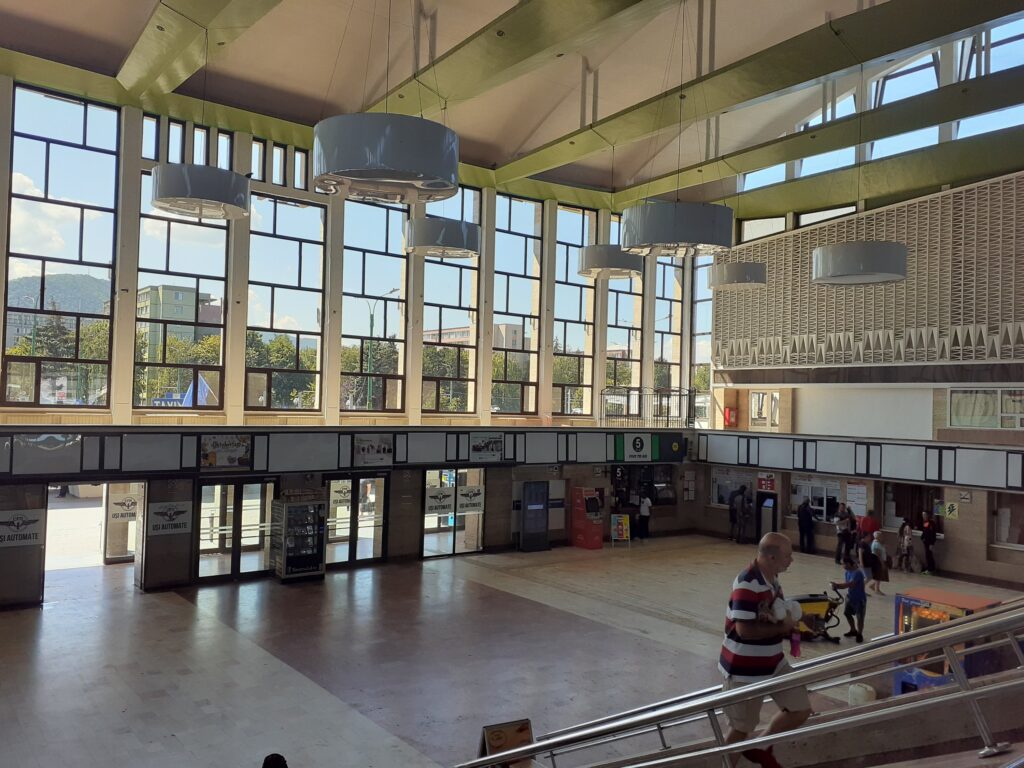
The village of Hălman, where Hărman Fortified Church is located, is 10 km outside the city of Braşov. We travelled to Hărman village by train.
Trains from Braşov to Hărman are operated by the Regio Calatori railway company. There is a dedicated ticket office at the Braşov railway station, where we bought our tickets.
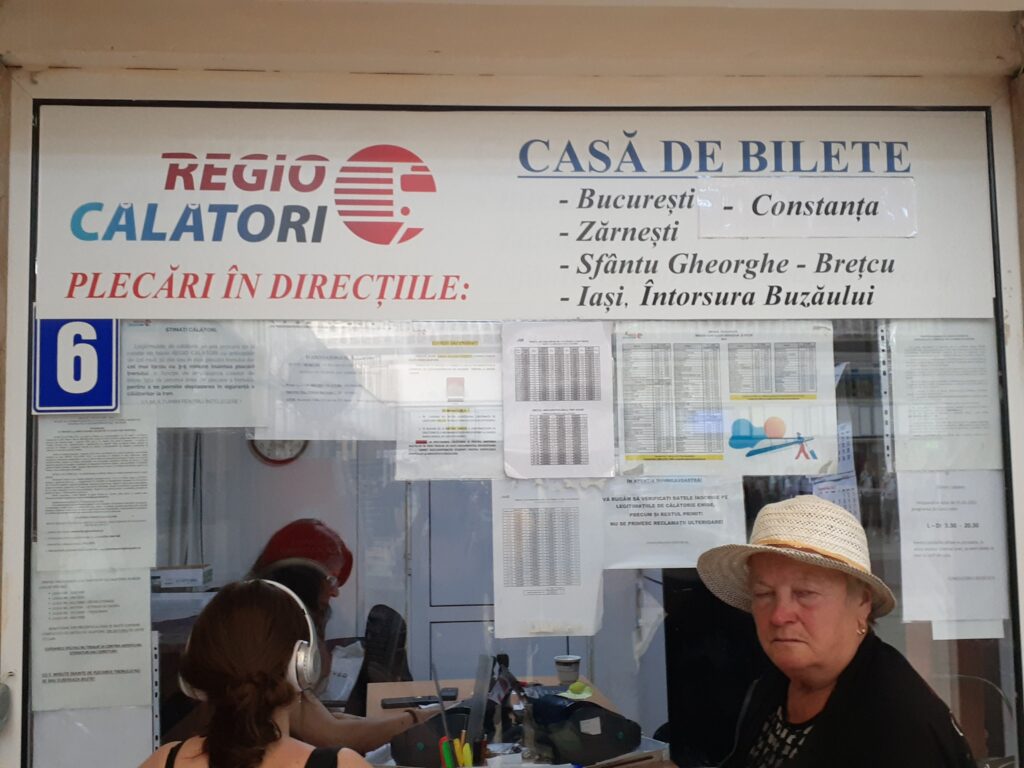
The train leaves Braşov at 1:39pm and arrives in Hărman at 1:51pm. The fare was only 4.5 lei per person. Seats were unreserved.
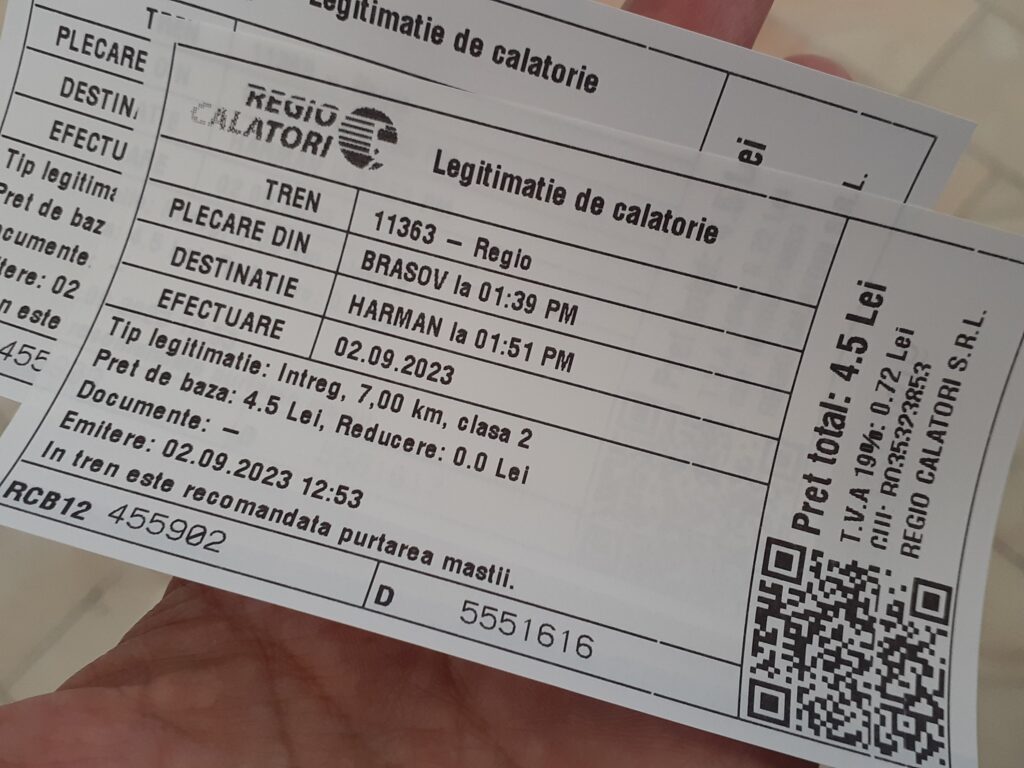
After purchasing our ticket, we had plenty of time before departure, so we killed some time by buying tickets to Sighişoara for the next day and surfing the internet on the free WiFi in the station.
After that, we headed to the platform. Our train had already stopped and we were able to board immediately.
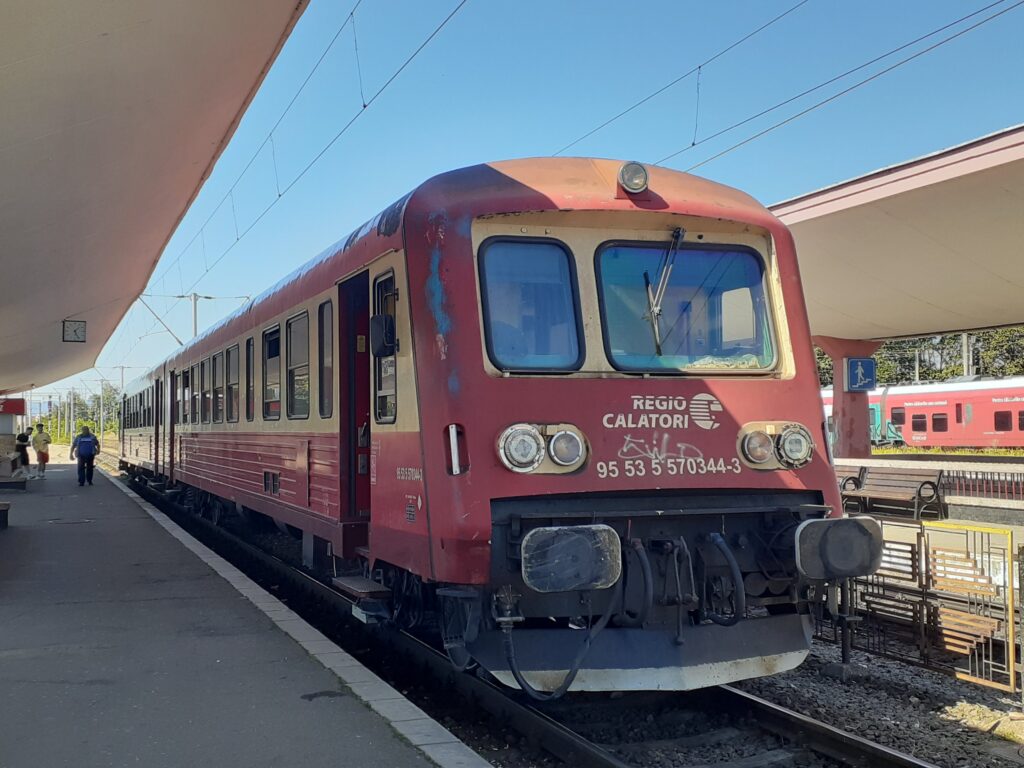
The train to Hărman is a slightly retro-looking train with two carriages.
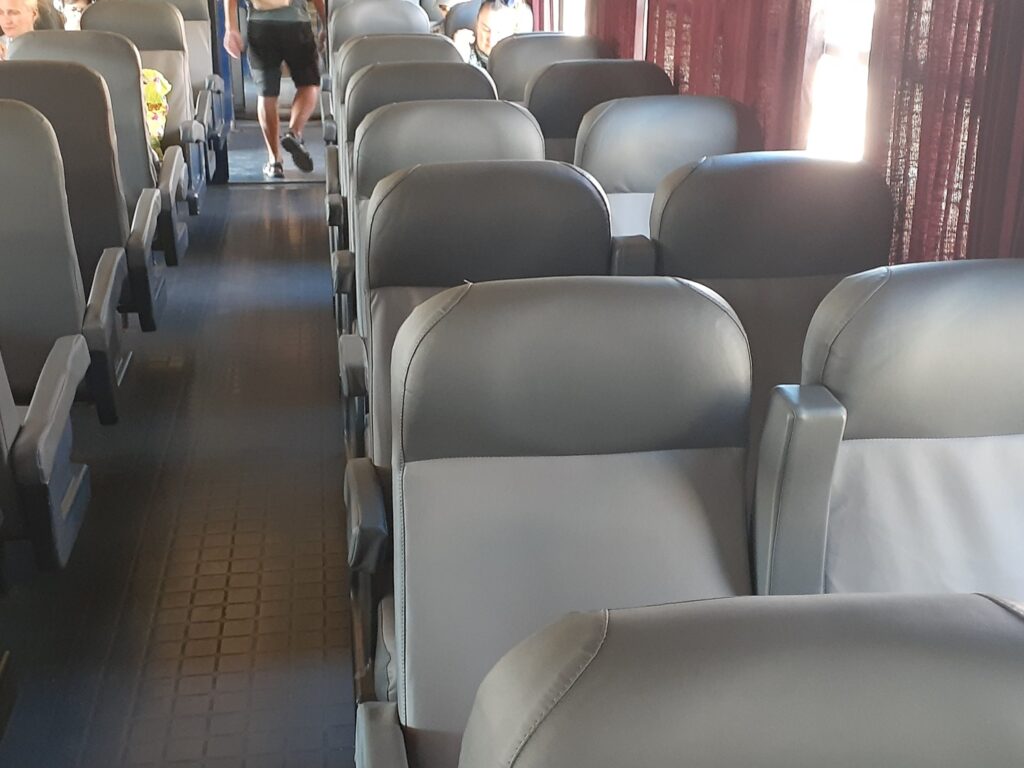
The seats were simple seats. The train was not full, so we were able to sit comfortably. The train left Braşov on schedule and arrived in Hărman in about 10 minutes.
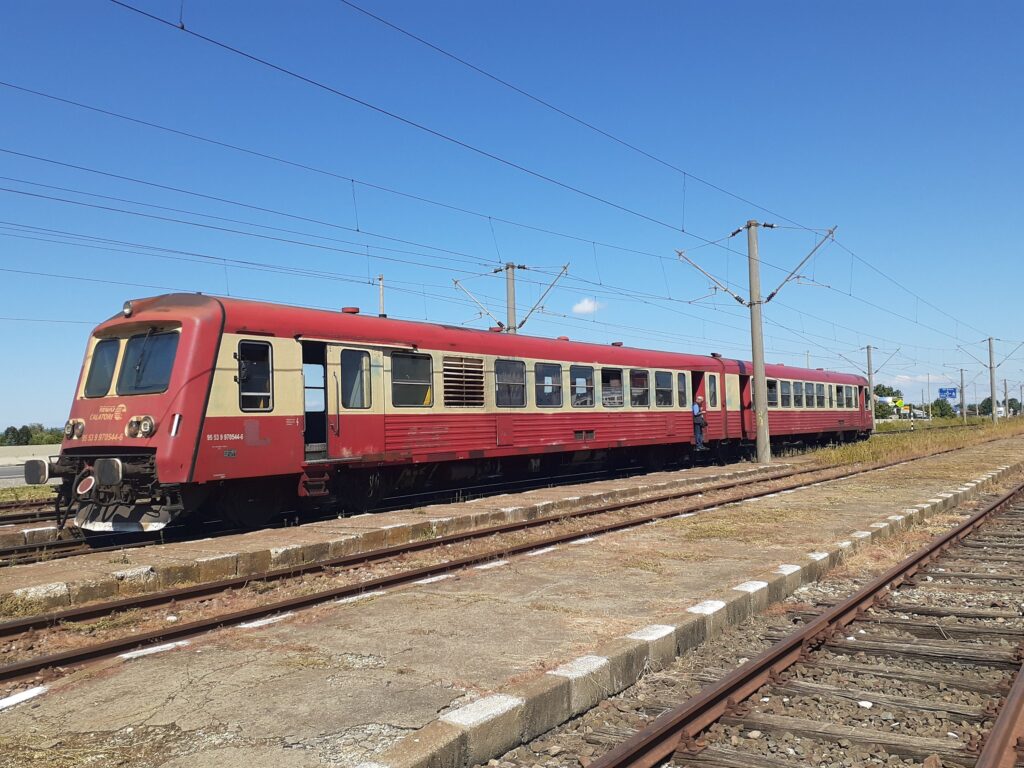
It was an ‘open’ railway station. We walked across the tracks towards the Hărman Fortified Church without passing through the station building or ticket gates.
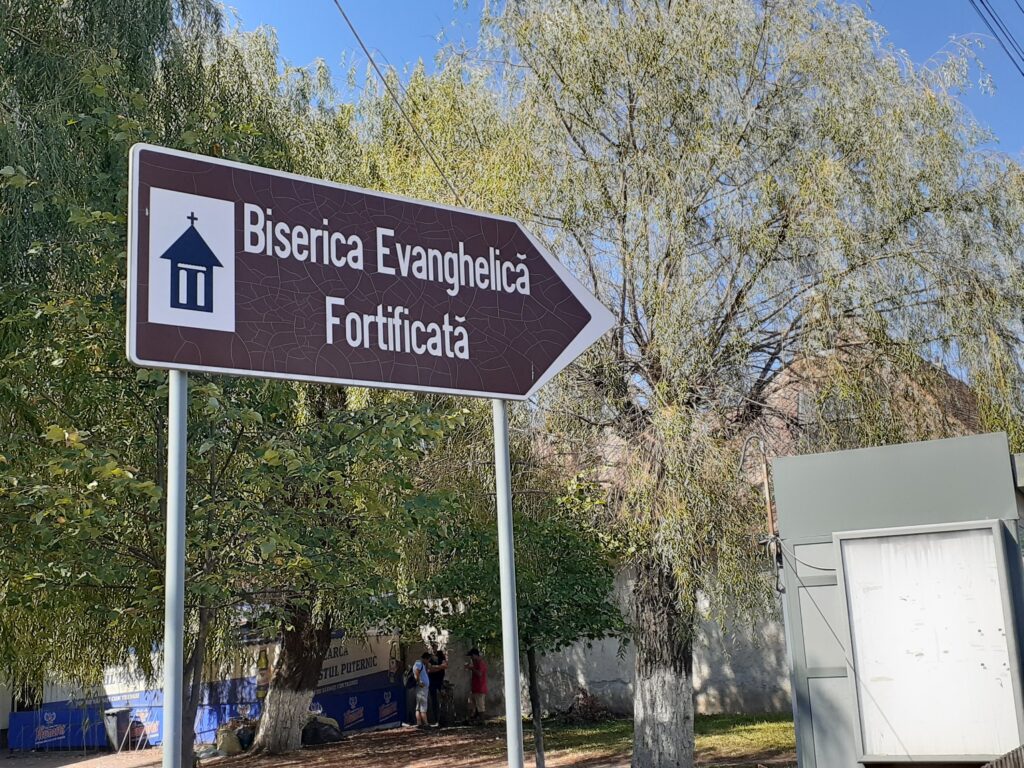
The distance from Hărman Railway Station to Hărman Fortified Church is approximately 2 km. It took about 25 minutes to walk there.
Entrance fees to Hărman Fortified Church

The ticket office is located at the gate of Hărman Fortified Church. The entrance fee was 15 lei per person. The receptionist asked us where we were from. When we told her we were British and Japanese, she handed us a file of explanations written in English. There is probably no Japanese version.
It included a map of the Hărman Fortified Church and detailed descriptions of the sights, which was useful during the visit.
Highlights of the Hărman Fortified Church
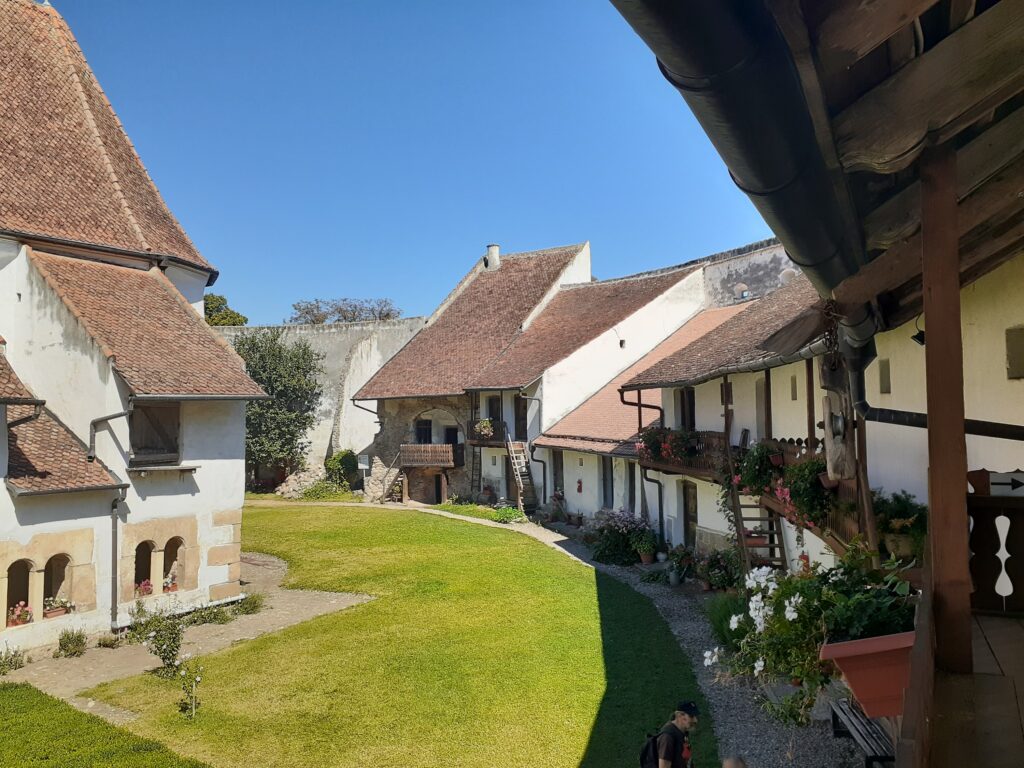
Entering the church from the ticket office, you will find a courtyard with the church cathedral in the centre and a row of two-storey rooms adjacent to the fortress wall around it. It is not possible to climb the steep stairs on the church wall, but the stairs on the fortress wall building, which are also steep, provide access to the museum and the interior of the fortress wall.
Hărman Church

We are not architectural experts, but it’s said that the church is remarkable for its 13th-century Romanesque triple nave cathedral appearance when viewed from the east.
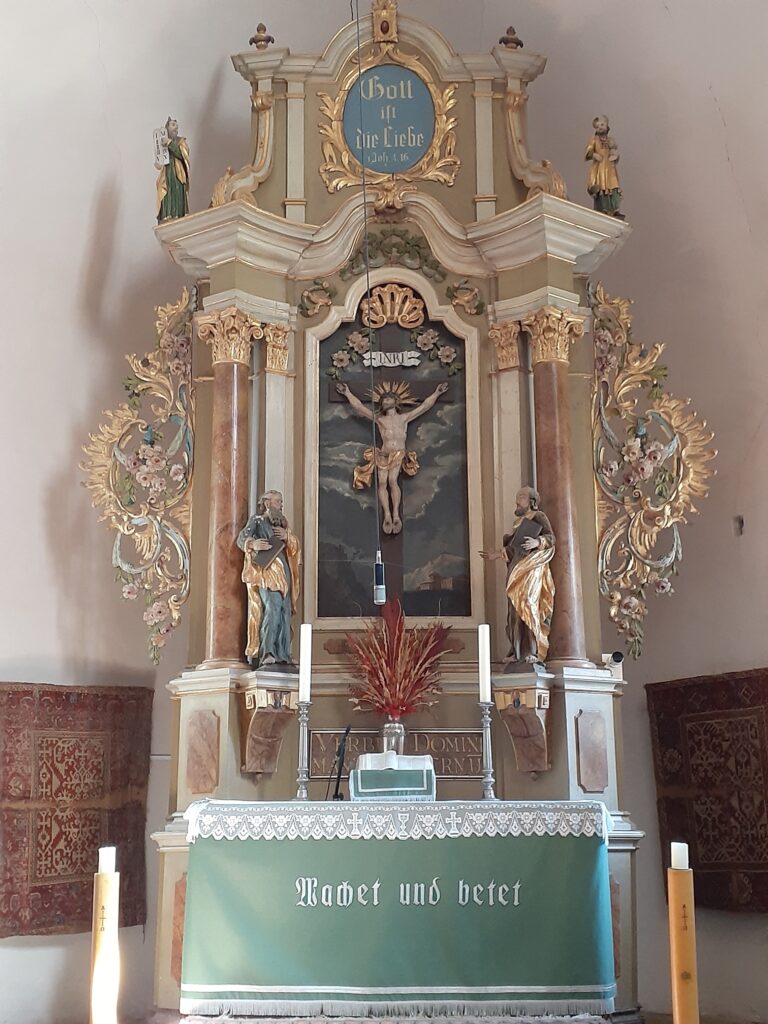
The Baroque altar on the east side was completed in 1787. Inside the church, there is a wooden pulpit dating from the late 18th century and a neo-Gothic chalice-shaped baptismal font made in 1899.

The backless benches put in the central area of the church are unusual. We have not been seen in any other church. It was designed for married women who could not lean back due to their clothing and was installed in 1753. It is made of pine wood.
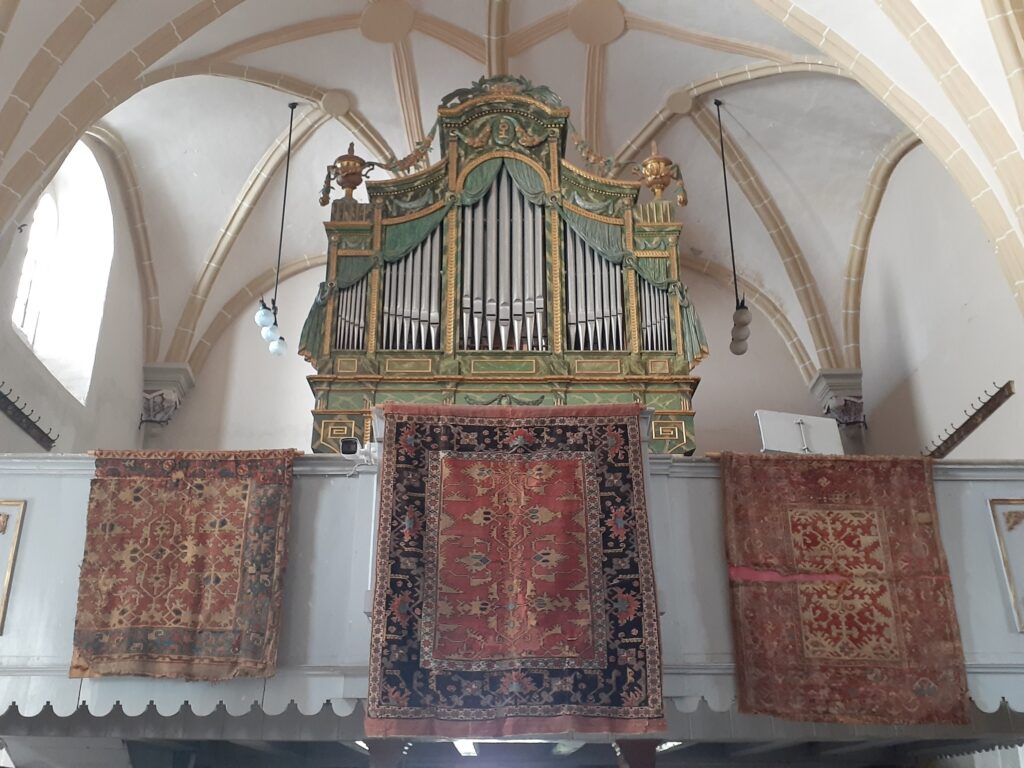
The organ was built in 1889. It was beautifully carpeted in the front.
Bell Tower
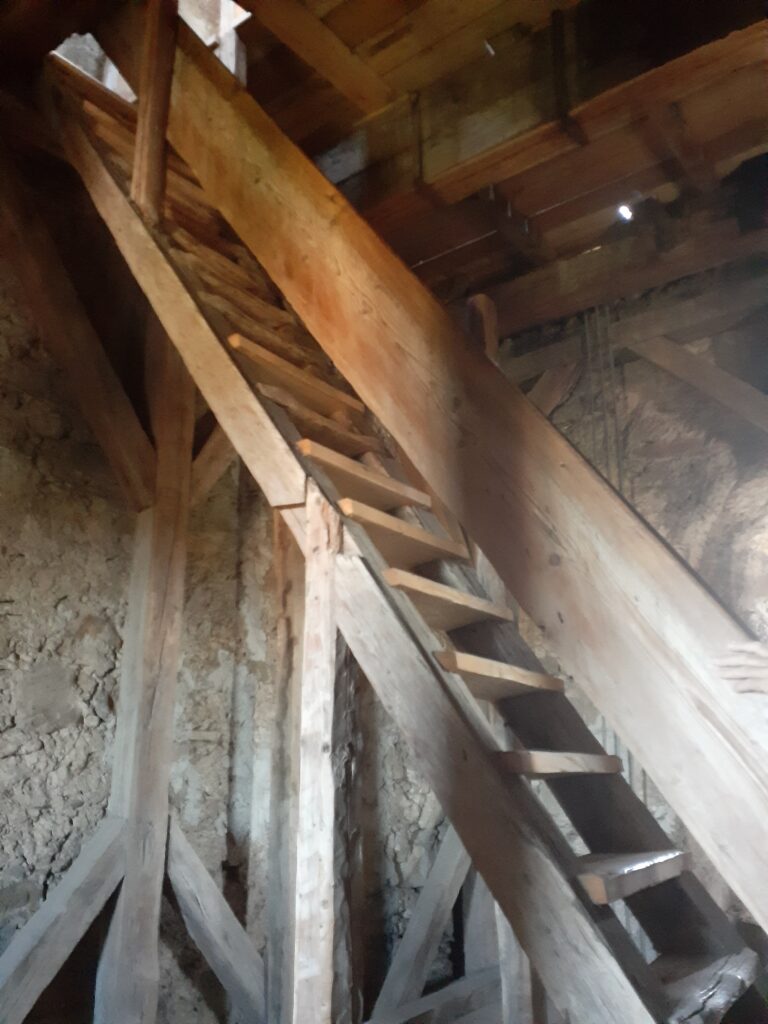
The bell tower, added in 1300, is 56 m high and can be reached from a steep staircase on the west side of the church up to the floor where the bells are located. Visitors ascend from the staircase in the north-west of the church and exit down the south-west staircase.

Access is via a spiral staircase and wooden stairs, which are very steep and should be climbed with care. When we went up, the bells were just ringing and we climbed to the top in the middle of the loud noise. At this time, the top floor of the bell tower housed two bells. Apart from them, there is also a bell in the church gate tower, which was manufactured in 1608 and is the oldest surviving bell in Hărman.
The roof of the bell tower has smaller towers on the four corners of the central spire. These small four towers were added in 1794. The sharp spire symbolises the ‘sword’ and represents the legal authority to pronounce death sentences.
Passages and towers within the fortification walls
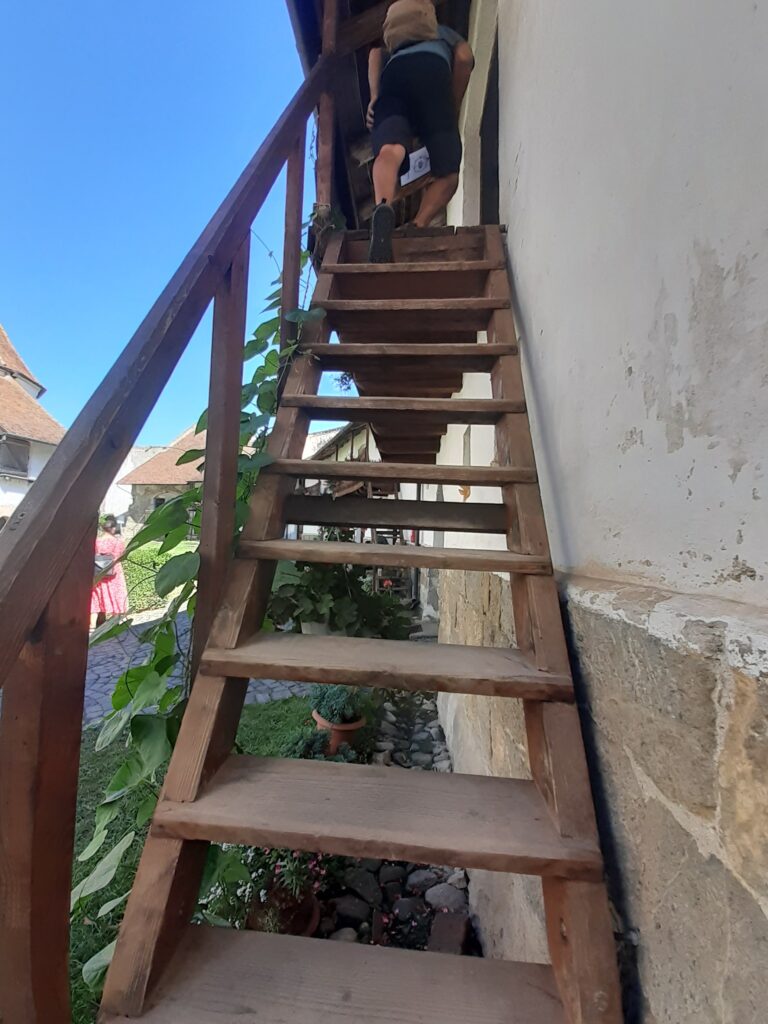
In the mid-15th century, under threat from the Ottoman Empire, the city of Hărman fortified the church complex. The existing walls were strengthened and a passageway with a gun sight was formed. Seven towers were built on its fortification wall for watchtowers, all connected by a passageway.
These fortification passages and towers were accessed by a steep staircase from the courtyard, from which a walking tour of the passages and towers within the fortification walls is still possible today.

Visitors can walk up from the staircase in the south of the courtyard, near the ticket office, to walk through the passages in the fortress walls, and exit down from the staircase in the north.
Chapel Tower
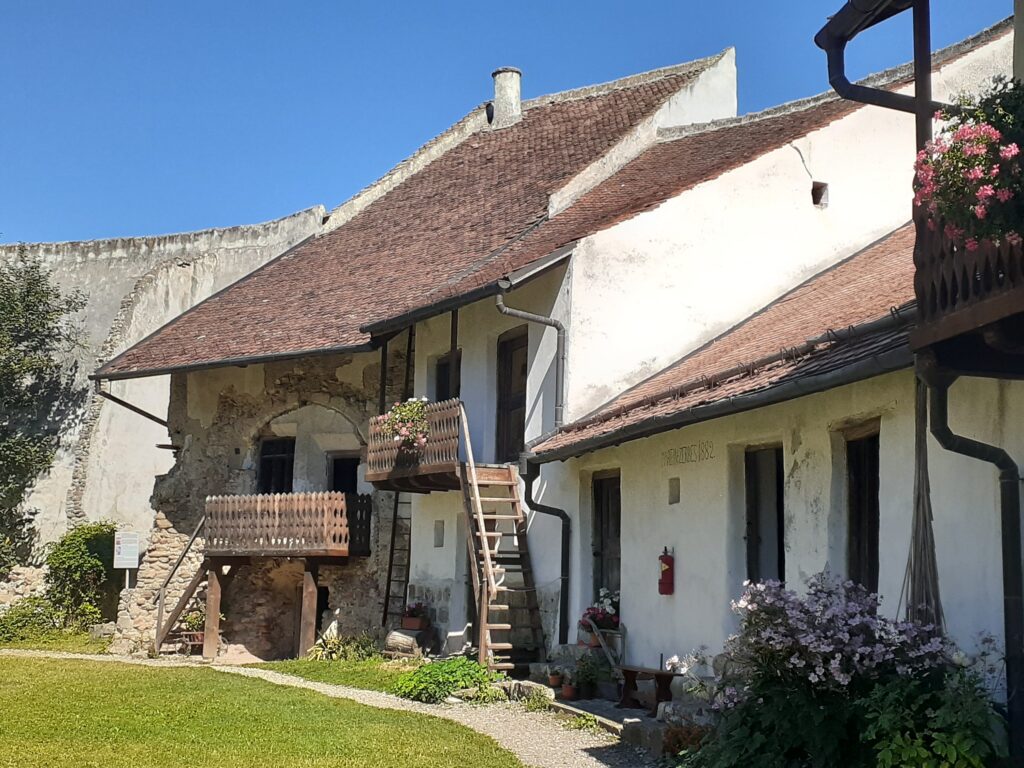
Originally a separate chapel, it was extended and became one of the fortification towers when it was fortified in the 15th century. Therefore, openings have been made in the sides of the windows as gun ports.
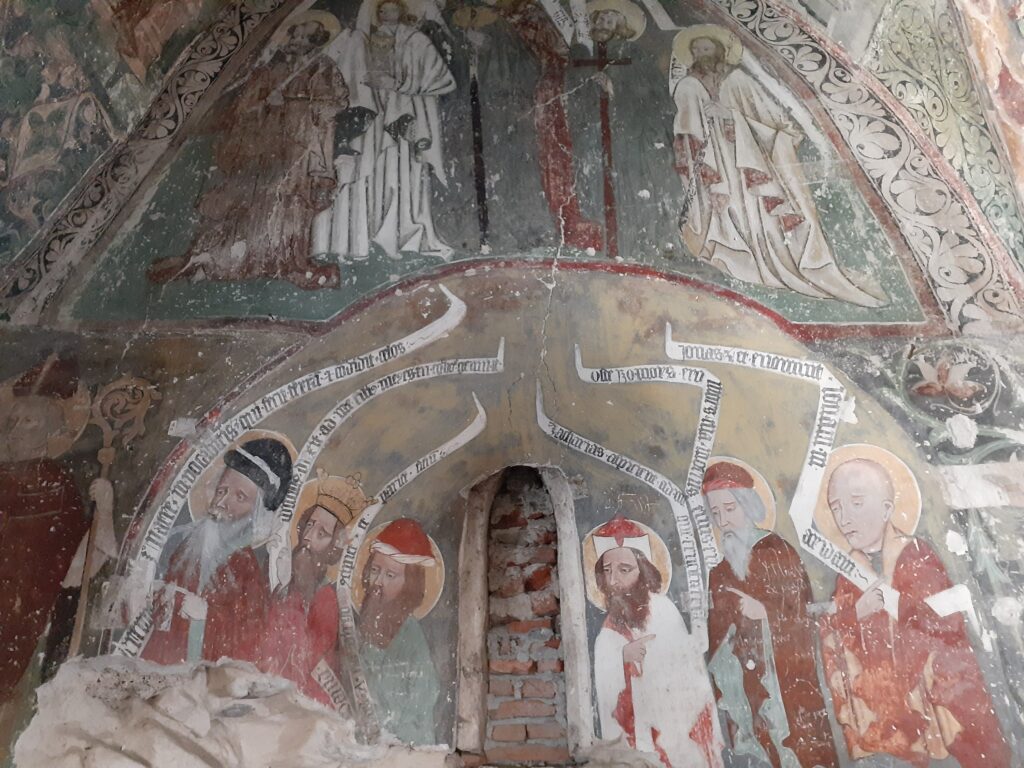
This chapel tower, the most easterly of a series of rooms in the south of the church courtyard, retains 15th-century paintings.
Museum
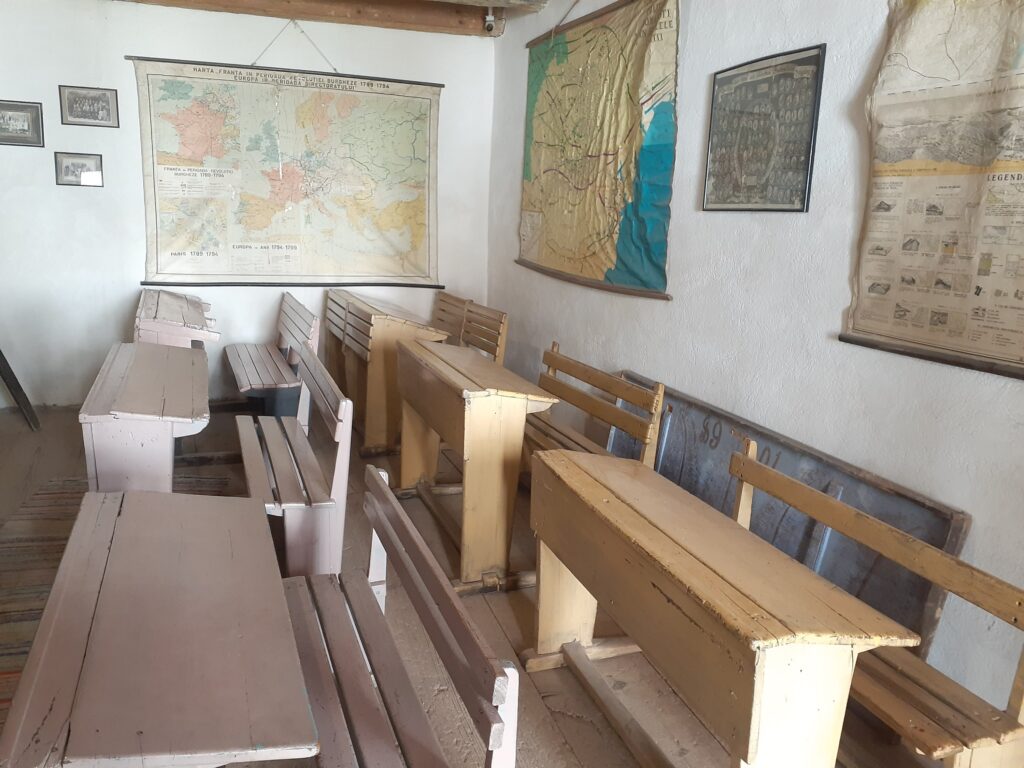
The rooms connected to the inner walls of the fortress are now a museum, where historical material is on display. There are furniture, tools, costumes, a school and bedrooms that evoke the period.
Half a day trip from Braşov
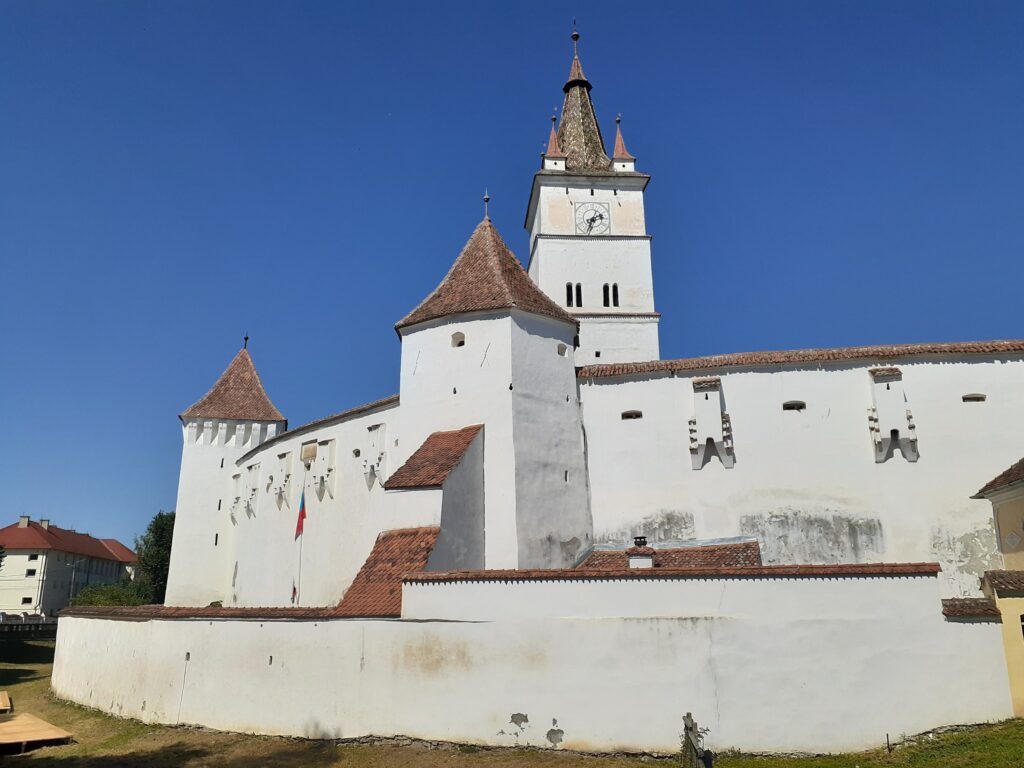
Public transport from Hărman Fortified Church back to Brasov is by train or bus. There is a bus stop near the church, but buses are infrequent. Train services are also infrequent, so it is advisable to check the return times for both before visiting the church.
We took the train back that day, just in time to catch the 3:51pm train to Braşov. The visit to the fortress church would have taken just over an hour.
Overall, we found the Hărman Fortified Church to be a well-maintained and spectacular historical attraction. It is an attraction with many different elements – adventure, historical documents and religious reflections – and is also accessible on foot from the railway station. The disadvantage is the limited number of trains from Braşov, but it is a highly recommended day trip spot from Braşov.



Comment